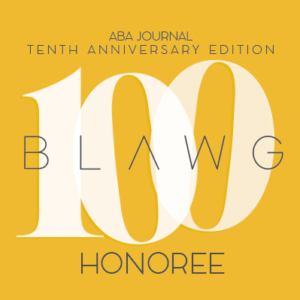Last week I attended a conference at George Washington University Law School: “Drivers of Corruption and Institutional Responses: Are Current Anti-Corruption Instruments Effective?” I believe this is an annual event at GW and this was the third year. The program is unique in that instead of focusing on legal proscriptions against corruption such as the FCPA, bribery law, competition regulation, etc., the conference examines broader questions such as: What Drives Corruption? Can Corruption be Measured? What Approaches to Corruption Have Been Effective?
A highlight of the program for me was the luncheon speaker, Sarah Chayes, who spoke on her recent book, “Thieves of State: Why Corruption Threatens Global Security.” No speaker has challenged me to think as much as Ms. Chayes did with her experience and insights. She spent many years in Afghanistan, first as a reporter and later with humanitarian reconstruction efforts. She also did extensive research for the book. My takeaway from her remarks is that large-scale corruption by state actors looting the public treasury for personal gain, and flaunting it with indescribable wealth, has been a large contributing factor to the Arab Spring uprisings and terrorism. A chapter in the book, which I’ve just started reading, is titled “Vertically Integrated Criminal Syndicates.” Ms. Chayes makes the connection between public corruption and civil unrest and raises serious security issues for US foreign policy.
Now, a word about public corruption in the form of public procurement bid rigging. Bid rigging was not a main issue of the conference but the subject mater reminded me of why, when I was a DOJ antitrust prosecutor, I enjoyed working public bid rigging cases more than any other form of price-fixing/bid rigging. Bid rigging on public projects strikes at the very foundation of government, leading the citizenry to believe government officials are either corrupt, incompetent or both. There are a number of reasons I believe competition enforcers, especially where competition regimes are fairly new, should devote substantial resources to public procurement bid rigging.
Double Dipping: If you want to rig a bid, you can pay off a public official for inside information. Or, you can collude with your competitors to decide who the winning bidder will be and have everyone inflate their bids. Or, you can do both! Public procurement bidding investigations may turn up a bribe to the procurement official to limit bidding, or turn a blind eye, as well as an agreement among the vendors to rig the bid. And, even in cases where public procurement officials are not on the “take,” they may be reluctant to speak out when they see what they believe is collusion. Prosecutions of public procurement corruption can help create not just more honest vendors—but public servants who feel supported if they do their job.
Public Perception: There are numerous economies around the world that are transitioning from a state-run becoming, or at least one where collaboration among competitors was accepted or event encouraged, to an economy where competition is the guiding principle. Old habits of collusion are hard to break. The easiest way to get the message out is with investigations, and where warranted, prosecution of bid rigging on public procurements. Also, I have found that public corruption cases can garner much more publicity than some other forms of cartels because the subject is of great interest to taxpayers.
Focused Damages: The current trend among enforcers is large international cartel price-fixing cases. And, it is true that these cartels can involve billions of dollars in commerce. Cumulatively, the overcharges are substantial. The large fines help competition agencies justify their budget to the political bodies that fund them. But, there is little reason to believe that the price-fixing of various auto parts has caused consumers to purchase fewer cars. However, when contractors rig public procurement bids for road construction projects, schools, hospitals, etc., there is more reason to believe there is less money in the public till for other projects. Part of this is because the harm is more concentrated (the public treasury) than price-fixing, which can overcharge thousands of consumers, but just a little each. Also, there is empirical evidence, and it has been my experience also, that bid rigging conspiracies are more effective at inflating prices than price-fixing cartels.
Vulnerable Victim: Public procurement can also be an easier target for unscrupulous bidders because the public procurement system can sometimes make it easier for vendors to rig bids. Bidding is often limited to prequalified bidders, letting vendors know who the competition is. Also, an award to the lowest bidder, as opposed to ongoing negotiations, can provide vendors with the certainty needed to effectively collude. There are many other contributing factors that can make public procurement an “easy mark” for vendors inclined to rig bids, or just unable to resist the temptation to collude.
Public corruption takes many forms and it is likely that bid rigging is relatively minor compared to corrupt regimes simply looting the public treasury. But, to the extent countries have competition enforcement agencies that are in fact dedicated to free markets and competition, public procurement is an effective area to target.
Thanks for reading.

